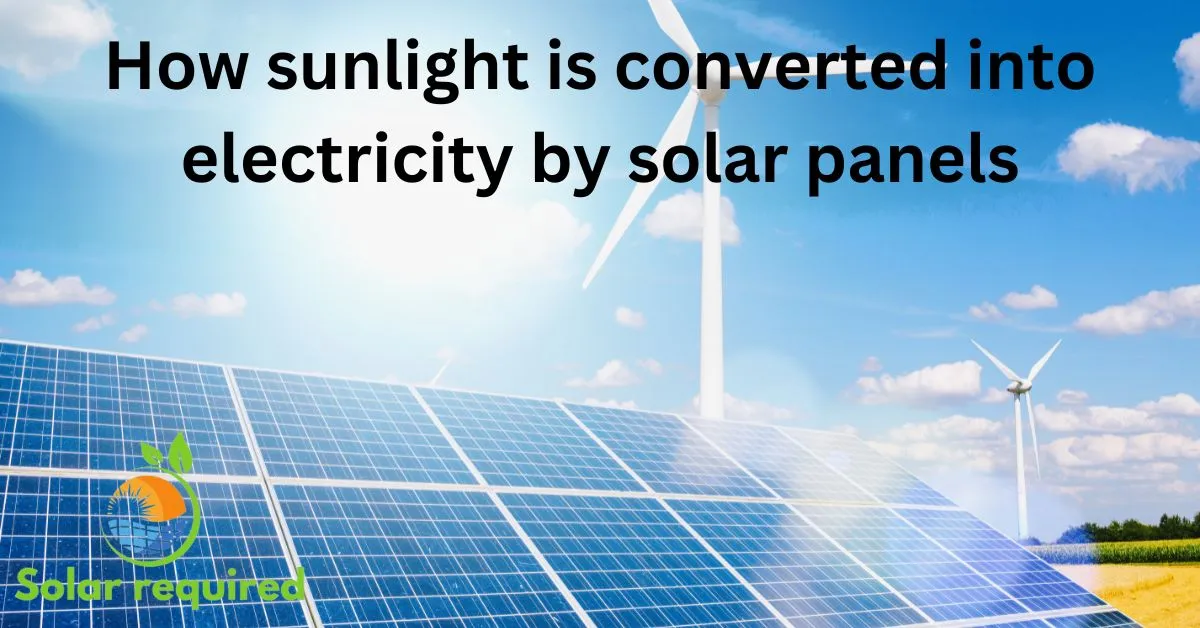Understanding Solar Canopy
Solar canopies are raised structures that hold solar panels and provide shade. They are usually installed over parking lots or other paved areas. They are similar to solar carports and ground-mounted solar panels.
What is a Solar Canopy?
A solar canopy is a raised structure. It hosts solar panels and provides shade for parked vehicles. It is designed to use unused open spaces like parking lots. It generates clean energy.
This article delves into the many parts of solar canopies. It covers the types available and how to understand their benefits and uses fully. It guides readers through the steps to add a solar canopy to your parking lot. It covers picking the right frame and understanding the details of canopy solar panels. These apply to both commercial and residential use.
Types of Solar Canopies
There are two main types of solar canopies: architectural solar canopies and fixed-tilt solar canopies.
Architectural Solar Canopies
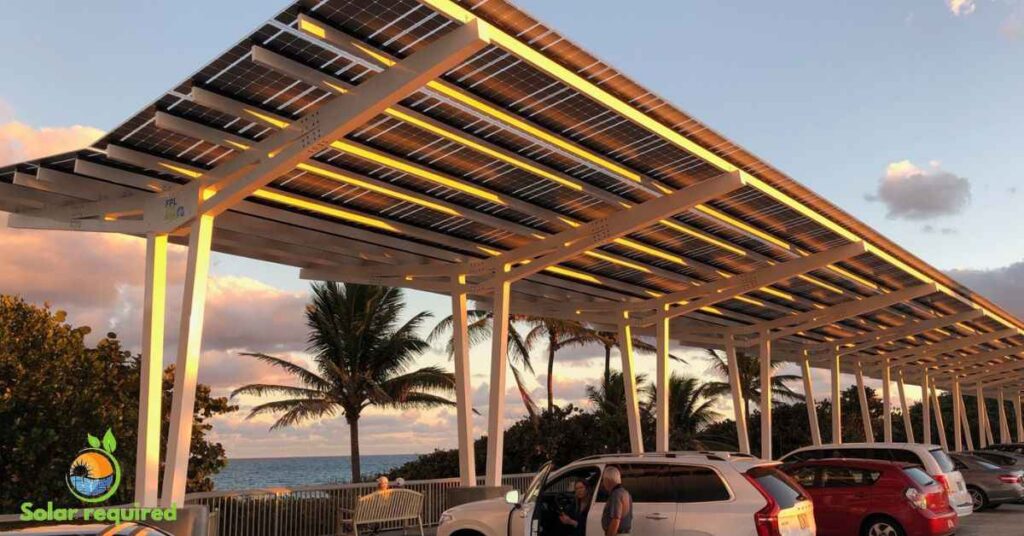
Architectural solar canopies have canopy panels angled at specific angles to prevent sunlight from reaching parked cars. The tilt can be adjusted depending on where the parking lot is and how it faces the sun. Their tilted shape serves two purposes: It keeps precipitation away from the cars below. Many canopies have motors. They move the panels during the day to get more sun and make more energy.
Fixed-Tilt Solar Canopies
Static panels that can be tilted or left flat make fixed-tilt solar canopies. Businesses often use them for large-scale solar panel projects. They are affordable and need little maintenance. Depending on the location, you can optimize the tilt angle to best absorb the sun’s rays or choose a flat canopy if more suitable.
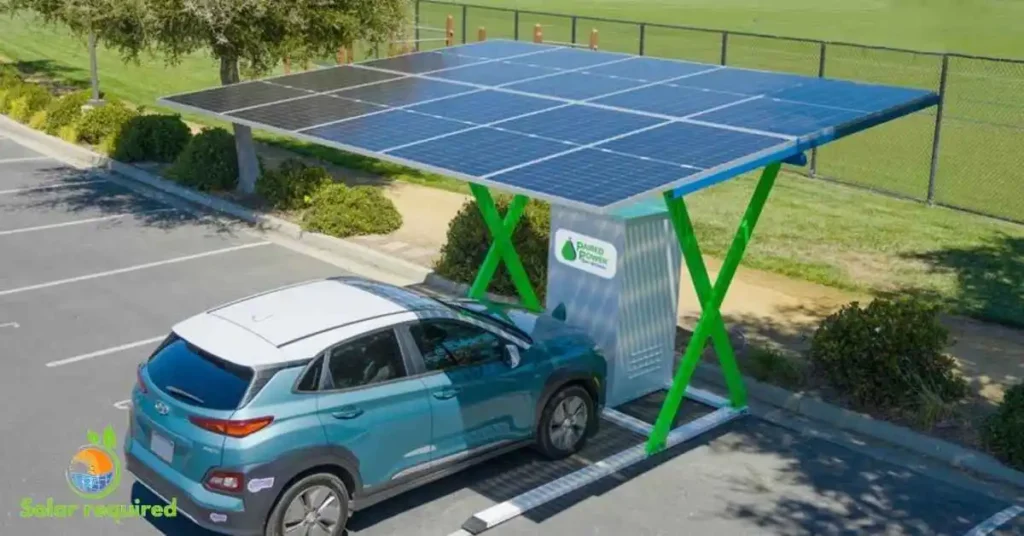
Solar carports are a specific type of solar canopy designed for covered parking areas. These structures use space efficiently to combine vehicle parking and solar energy generation on the same parcel. Solar carports can be as small as single-spot residential carports or large-scale commercial installations that cover entire parking lots.
Benefits of Solar Canopies
A solar canopy can produce clean, renewable energy and offer shade and shelter to cars and people below. This is one of its key features. Solar canopies also reduce greenhouse gas emissions by producing solar energy in otherwise unused space.
Reduced air conditioning needs and shade
On hot days, a solar canopy’s shade keeps cars cool. It reduces the need for air conditioning and increases fuel efficiency. In extremely hot weather, using air conditioning can lower a conventional vehicle’s fuel efficiency by more than 25%.
Optimized Solar Panel Orientation
Solar canopies allow for optimal panel orientation, which maximizes electricity production. However, the roof’s characteristics restrict rooftop solar arrays.
Reduced Demand Charges
Solar panels produce most power in the afternoon, coinciding with peak demand charges. A solar canopy can greatly cut electricity bills by reducing grid electricity use at peak times.
Applications of Solar Canopies
Commercial and residential use
Solar canopies work in both commercial and residential settings. They provide a practical solution for using unused open spaces and for adding to energy independence.
Large-scale installations
Solar canopies suit big installations. They cover entire parking lots and produce a lot of renewable energy.
Parking Lot Canopies
A specific type of solar canopy is called a parking lot canopy. It is made for covered parking areas. It combines parking and solar energy generation on the same site.
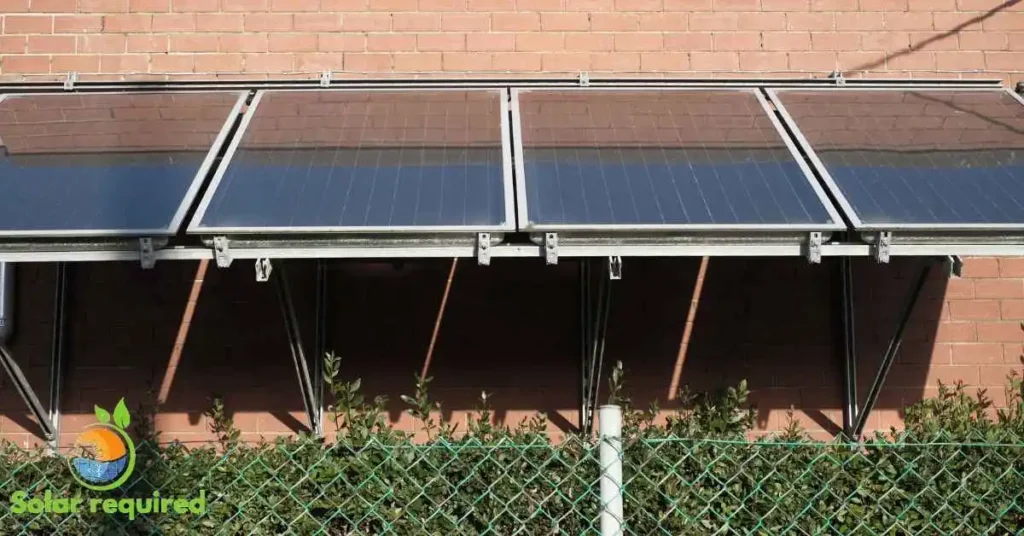
Solar canopies may cost more upfront than rooftop installations due to extra labor and equipment needs. However, canopies offer many benefits. Businesses can use tax breaks and get faster depreciation through the Modified Accelerated Cost Recovery System (MACRS), which reduces the net cost and speeds up returns on solar investments.
Steps to Implement a Solar Canopy in Your Parking Lot
Site Assessment
It would help if you did a full site assessment. Do this before installing a solar cover in your parking lot. The evaluation should consider things like the available area. It should also consider exposure to sunlight and local weather. You will determine the best canopy size and orientation. This will involve assessing the site’s solar potential. To ensure the new installation works with the current infrastructure, you must also check its structure and wiring.
Choosing the right design
After the site inspection is finished, the next stage is to choose a suitable solar canopy design. The design should meet the location’s specific requirements, including the desired capacity, aesthetic style, and budget. Consider the canopy’s tilt angle. Also, think about the panel layout and materials. These factors maximize energy production and ensure durability.
How to Install a Solar Canopy
Installing a solar canopy can be a great way to use the sun’s energy. It also protects your cars or outdoor area while offering shade. Before installing a solar canopy, you must decide on a spot that gets plenty of sunlight all day long. This might be in your backyard, parking lot, or driveway.
Next, you must calculate the canopy’s size to meet your energy requirements and the amount of area that is accessible. After selecting the size, you must fasten the canopy’s frame to a strong object, like a building or some poles. Verify that the frame can endure a range of weather conditions and is firmly fastened.
After securing the frame, you can start installing the solar panels onto it. Ensure they are positioned at an angle that maximizes sunlight exposure. Connect the panels. Then, connect them to an inverter. The inverter turns the sun’s energy into usable electricity.
Finally, connect the inverter to your home’s electrical or battery storage system. Once everything is connected and secured, your solar canopy should start producing clean energy for your home or business.
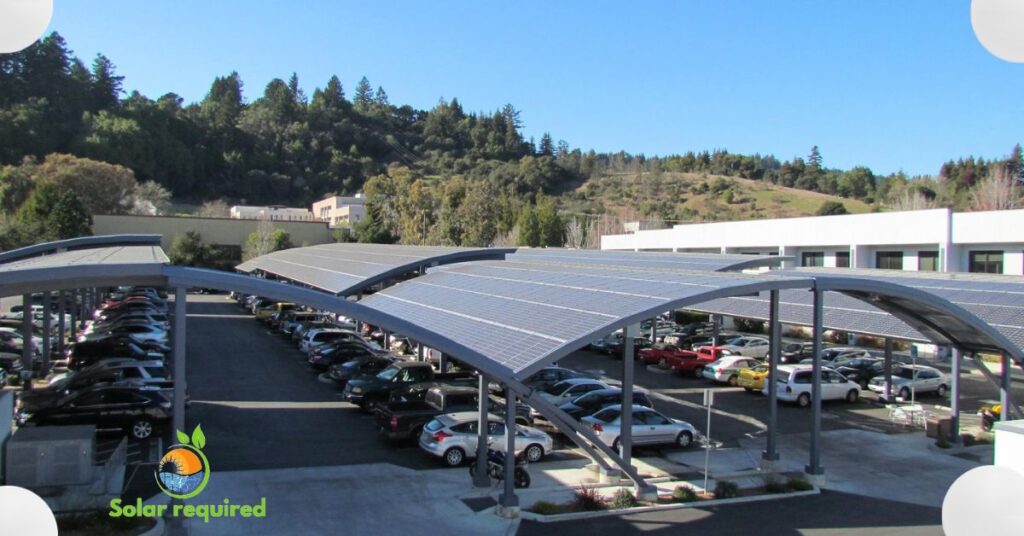
Cost and Financing Options
Solar canopy implementation costs differ significantly from one to another. It depends on many factors like the system’s size, location, and component choices. But to make the investment more affordable, there are several financing solutions available:
Governments often offer refunds, tax credits, and incentives to promote solar energy at the federal, state, and city levels. You can get financing options with good terms and rates through loans for solar projects.
Power Purchase Agreements (PPAs):
Under a PPA, the property owner agrees to buy the power at a set rate for a time. A third-party developer builds and owns the solar canopy system.
By following these steps and exploring financing, businesses and people can add a solar canopy to their parking lot. This will help create a more sustainable future and may cut energy costs.
Selecting the Right Solar Canopy
Selecting the right solar canopy for your parking lot involves considering several factors, including size, layout, and design options. Base your choice on your needs, including space and energy.
Single, double, and triple bays
Bays the number of rows or “bays” that the solar canopy covers is an important consideration. A single bay canopy covers one row of parking spaces. A double-bay canopy covers two rows, and a triple-bay canopy covers three rows. The number of bays you choose will depend on the layout of your parking lot and your energy needs. Calculate your energy needs.
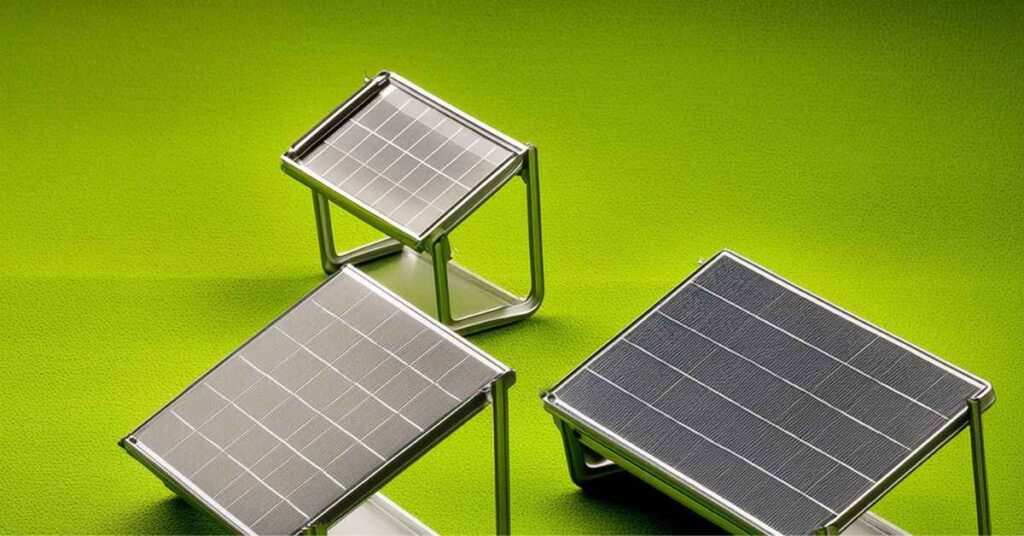
A larger canopy with multiple bays can generate more electricity, but it also comes with a higher installation cost. However, as the system size increases, the price per watt decreases because some installation costs are fixed and will stay the same with the system’s size.
For example, a single-bay canopy may be best for a small parking lot with limited space. But if you have a larger parking lot and higher energy demands, a double—or triple-bay canopy could be better.
Another crucial consideration is the design of your solar canopy. There are two main options: architectural solar canopies and fixed-tilt solar canopies.
Solar canopies are an architectural feature. They have panels tilted at specific angles. The angled shield parked cars from the sunlight. You can customize the tilt based on the parking lot’s location. It depends on its orientation relative to the direction of the sun. These canopies often have two purposes. Their tilted design also directs rainwater away from the vehicles underneath.
Fixed-tilt solar canopies have stationary panels that you can tilt or set flat. They offer a cheap option. It needs minimal maintenance. They are often preferred for large-scale solar panel projects. You can optimize the tilt angle to absorb the sun’s rays best. This is based on the location. Or, you can choose a flat canopy if it is more suitable.
Carefully consider the size, layout, and design options. Then, you can select the solar canopy that best suits your needs. It will maximize the benefits of this sustainable solution.
FAQs
What are the benefits of installing solar canopies?
Installing a solar canopy is beneficial if your parking area receives a lot of sunlight and your roof is shaded. Solar carports cost more because they need extra structures, but they allow for the best placement of solar panels, which can increase electricity production.
What are the challenges of installing solar panels on parking lots?
The primary hurdle in installing solar panels on parking lots is the cost. The expense is much higher than for ground or rooftop installations. This is because building a support structure for the panels involves a lot of work.
How does placing solar canopies on parking lots contribute to environmental sustainability?
Using large, already cleared areas like parking lots for solar canopies is good for the environment. This approach saves undeveloped land that might otherwise be harmed. It also makes power close to where it’s most needed, and it shades parked vehicles.
What functions do solar canopies serve?
Solar canopies have two benefits. They offer shelter and make electricity using solar panels. These structures are becoming more and more popular. They are used in many places. These include commercial properties, transportation hubs, parks, and farms.

